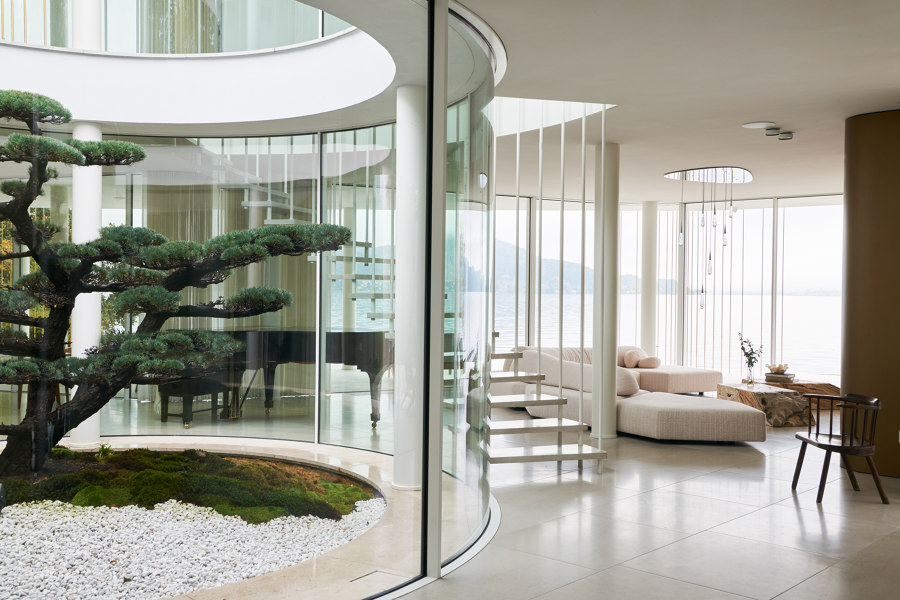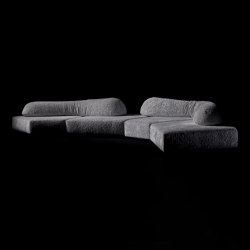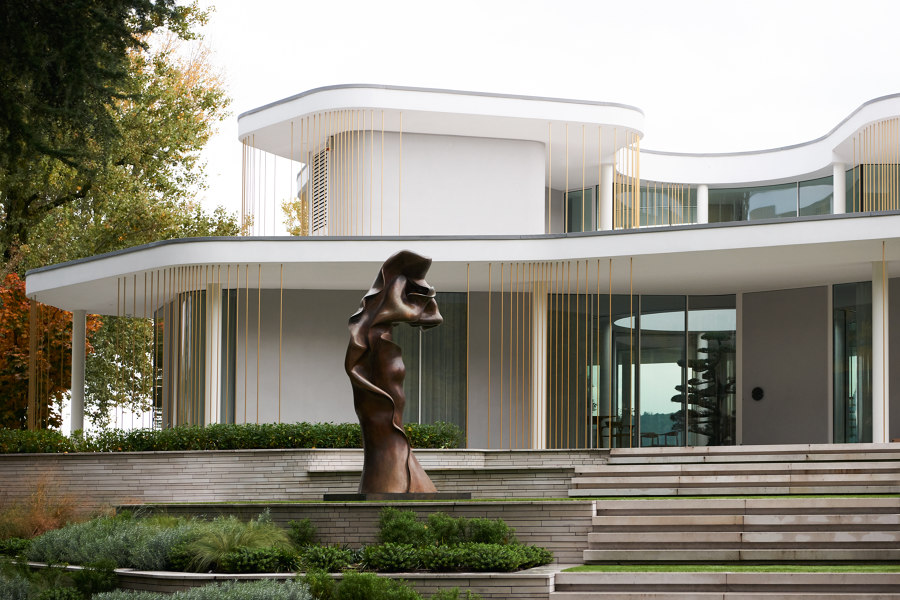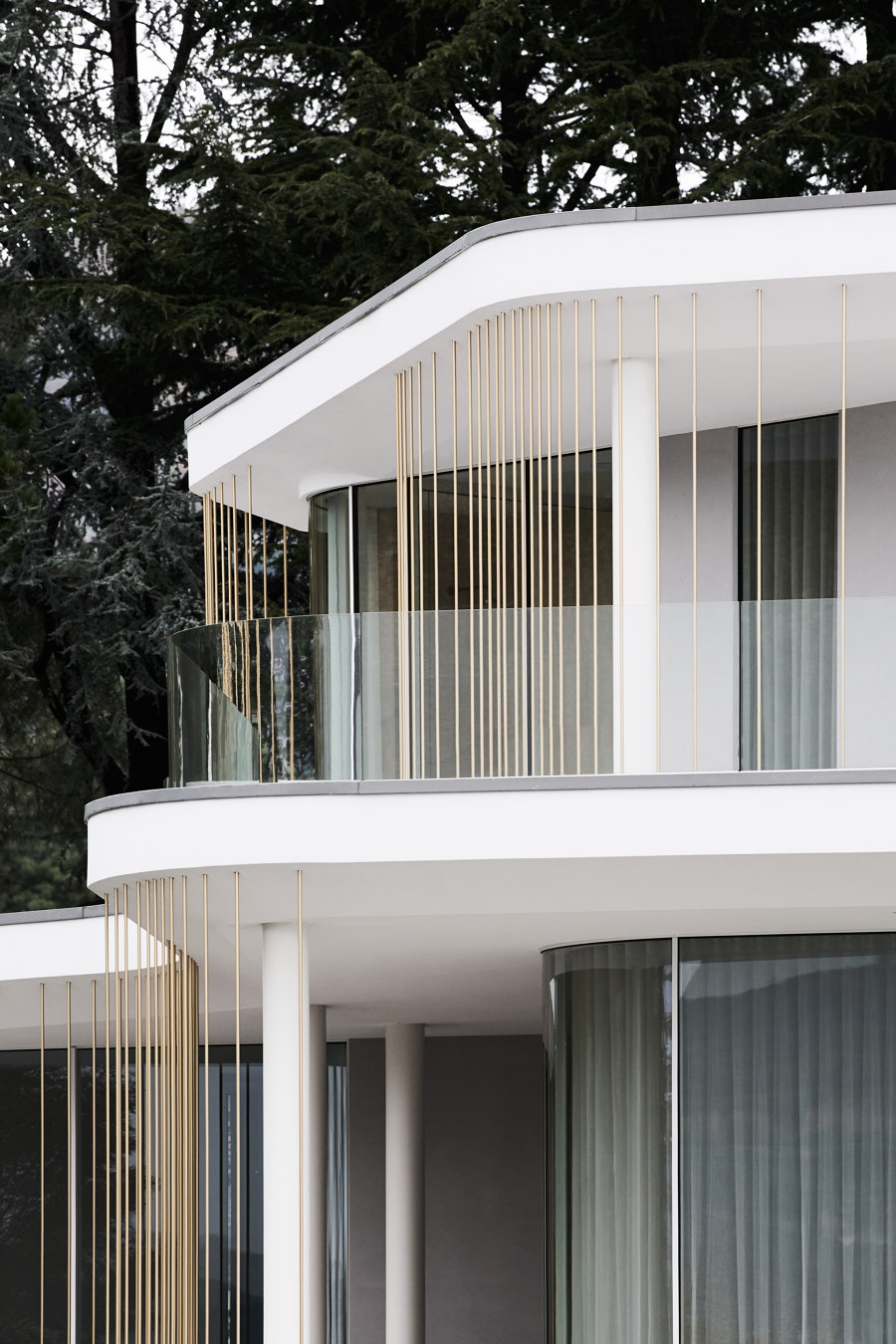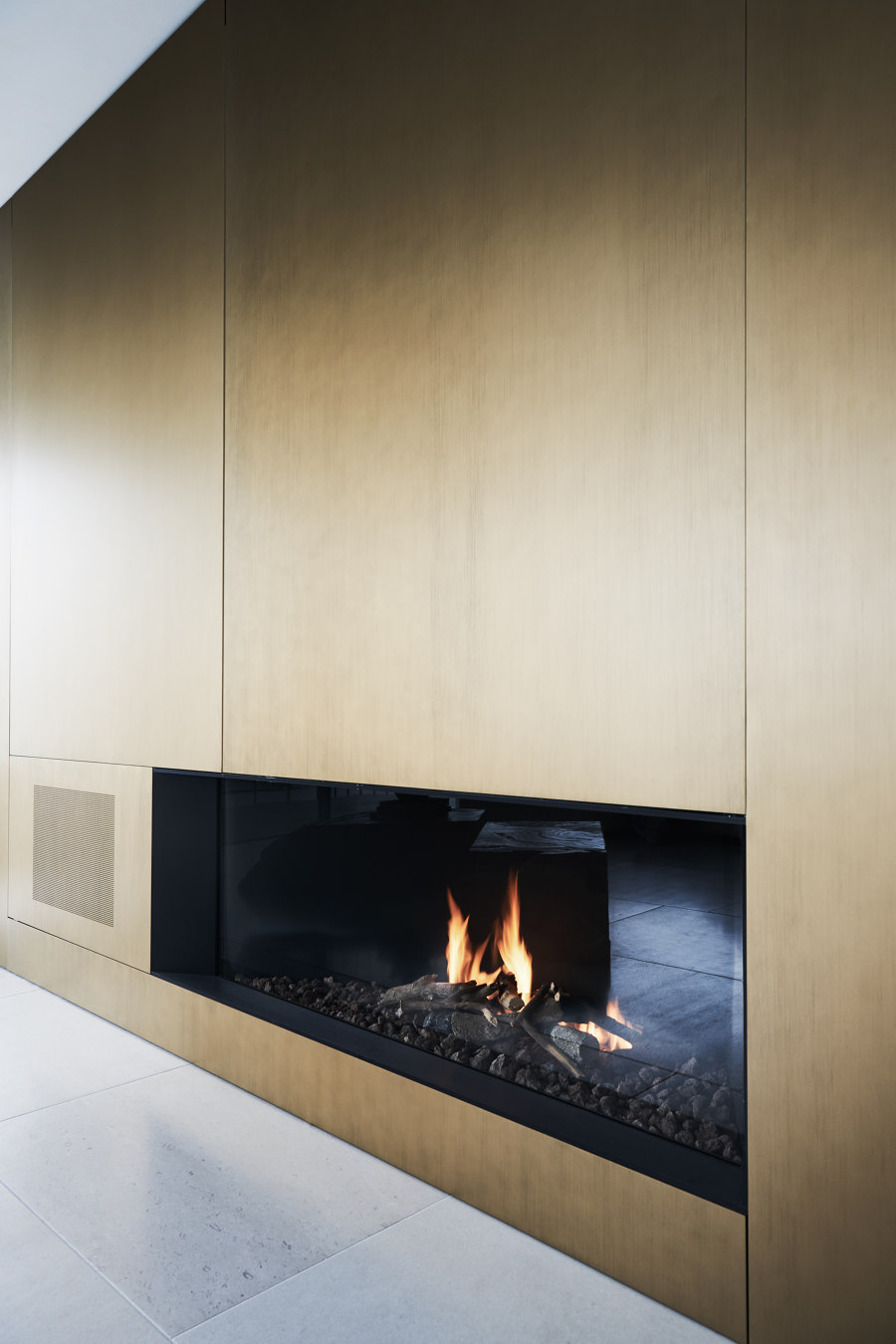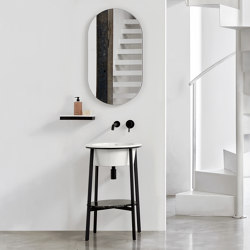Nestled on the shoreline of Lago Maggiore, Villa Mosca Bianca embraces its natural landscape, merging sustainability and lifestyle within it's form. The layout and atmosphere has been designed as a reflection of the owners day-to-day routine to be a setting for meditation, outdoor dining and water views whilst visiting his holiday home in the outskirts of Lake Como. The materiality and form of the architecture extends to the landscape and careful curation of the home’s interior and furnishings.
Set in what was once a thick pine needle forest, a terraced landscape was carefully carved out opening up the house to the expansive lake beyond and a stunning, 180 view of sunsets over the surrounding mountains. The villa’s form undulates to create alternating internal rooms and external terraces like a series of fingers moving between inside and outside as they reach into the landscape.
At its heart is a central atrium housing a 70-year old bonsai tree. The bonsai garden and atrium is open to the sky flooding the residence with natural light and visually connects the surrounding rooms and central staircase, whilst acting as a rain water collector and a passive air system for the villa. Complementing these systems: solar panels, rain water collecting and heat pumps help to produce 60% of the villa’s sustainable energy.
From the villa’s interiors, the landscape terraces down to the waterfront, providing plenty of moments for pause and reflection starting the day with harvesting vegetables from the organic garden for breakfast to dinner to gathering around the outdoor fire-pit after sunset. Each of these moments have become part of the client’s daily routine facilitated by an architecture that allows them to live, breathe, and play in this sustainable and comfortable ambience.
The context of the actual site dictated the shape of the house. We wanted each bedroom experience to have a various enviorment in landscape by inserting fingers into each region. From the thick forrest of pine to the water edge of the lake. The site was key for dictating the unique design. The house is in three layers. The heart, the inside, the inside/outside and outdoor terraces.
Because planning is counted on volume, we wanted to create a central garden which made the home feel bigger but didn’t necessarily count as part of the area because it was open air. At the same time, it created a passive central ventilation system and added to the brightness and features of the interiors.
Materials used, intersting stories about their origin
Alot of the interiors included natural stone- completely unpolished and unsealed that we really wanted rough and exposed. Because the house is so minimal and clean we wanted to create contrast within it. Unsealed travertine is so much more beautiful and natural then when it’s completely machined over. We tried to make the house as simple as possible. The local fabricators of all of the elements really added to the quality and detail of the home.
Colour palette
Concrete, stone, white render, antiqued brass, glass, white timber
Sustainable features
The inner garden opens up acting as a passive ventilation system. The overhang is designed to be longer on the south side based on consideration of sun studies. The brise soleil is more decorative and creates interesting shadows across the house. The house is 60% natural energy and water. There is a rain water collector in the ground and solar panels on the garden house. The house features an organic garden that supports the clients with their vegetables for their lunch and dinner.
Design Team:
Design Haus Liberty
Local architect: Roberto Manzetti
Landscape Architect: Colin Okashimo Associates




